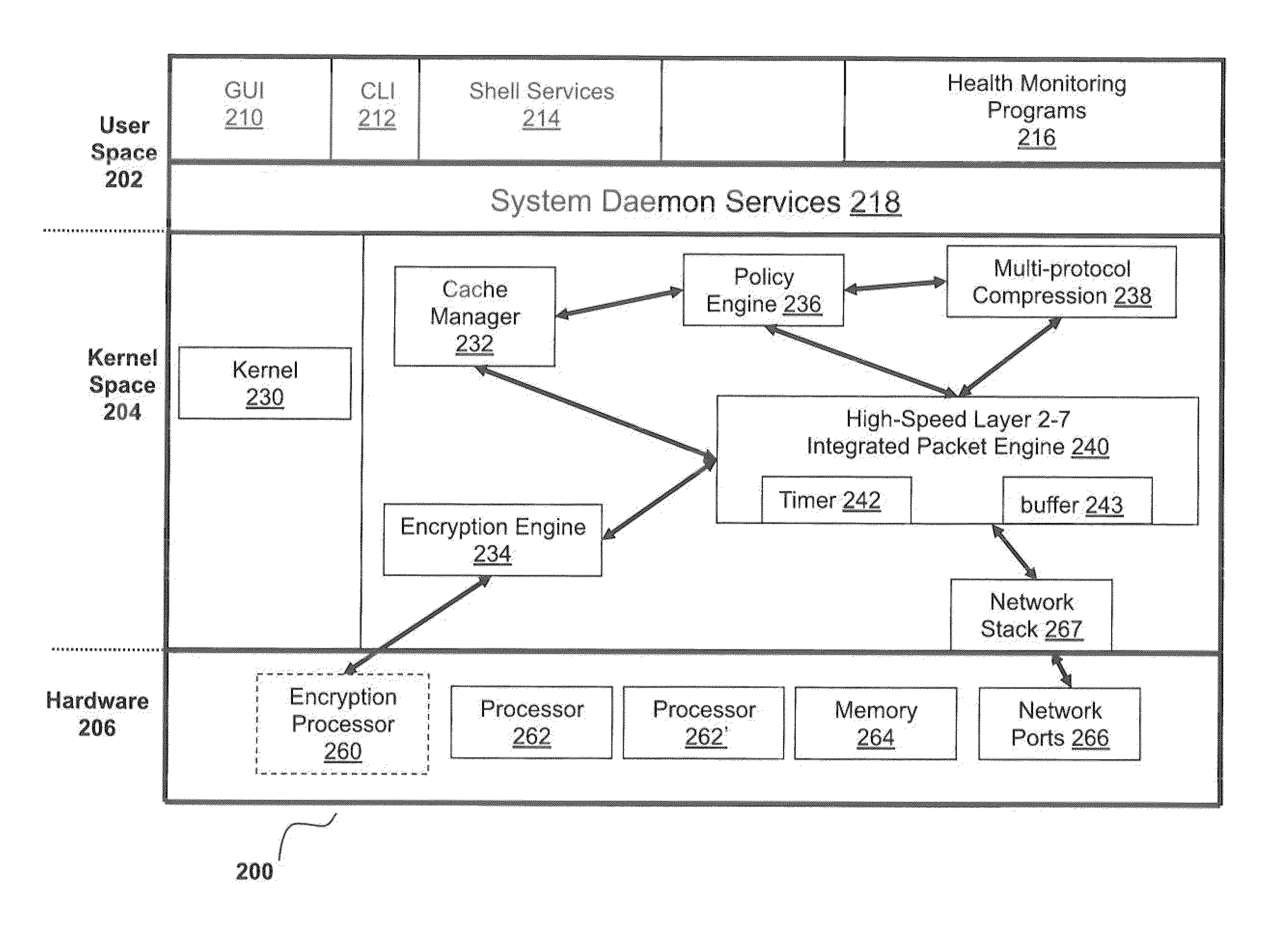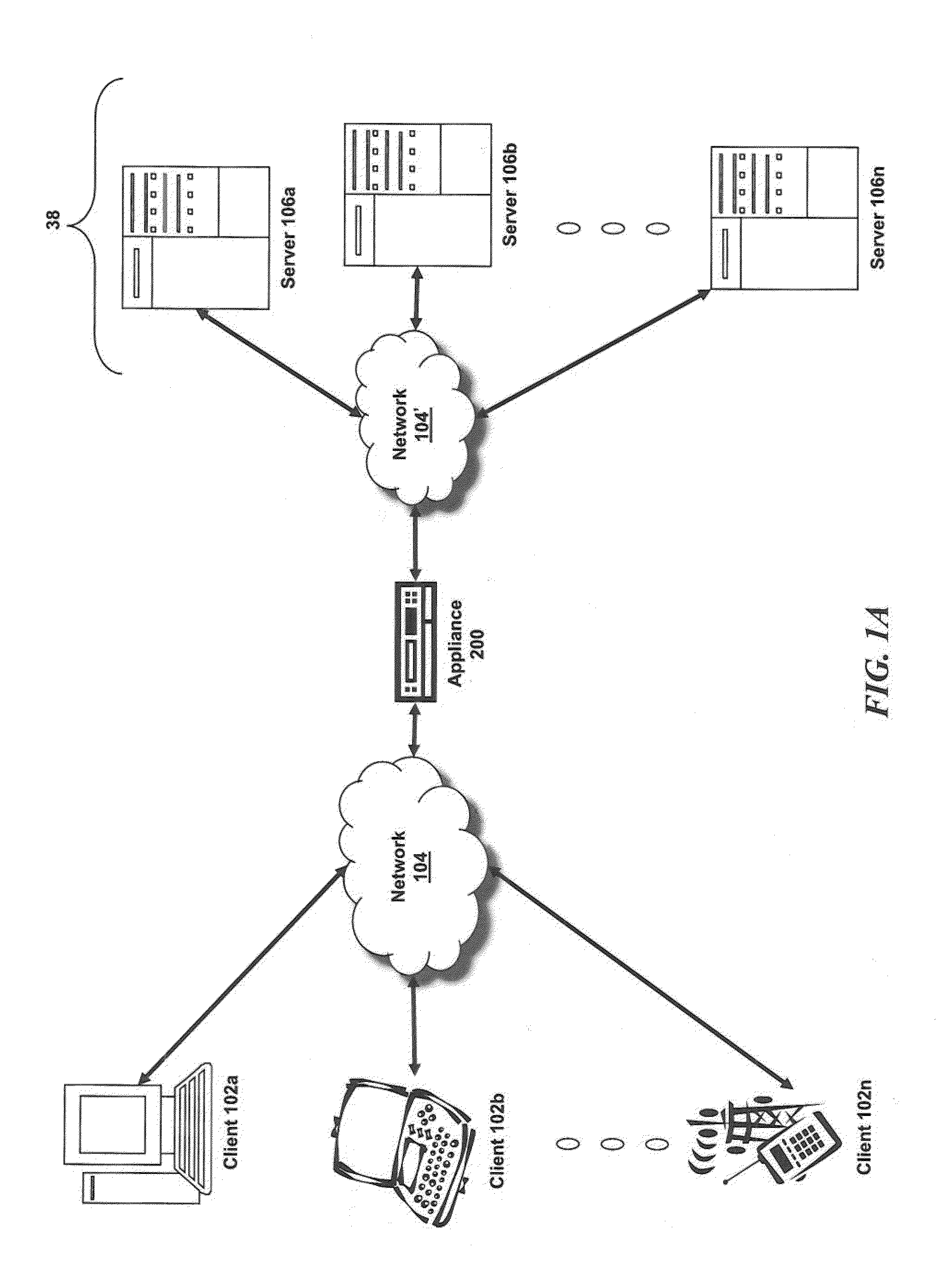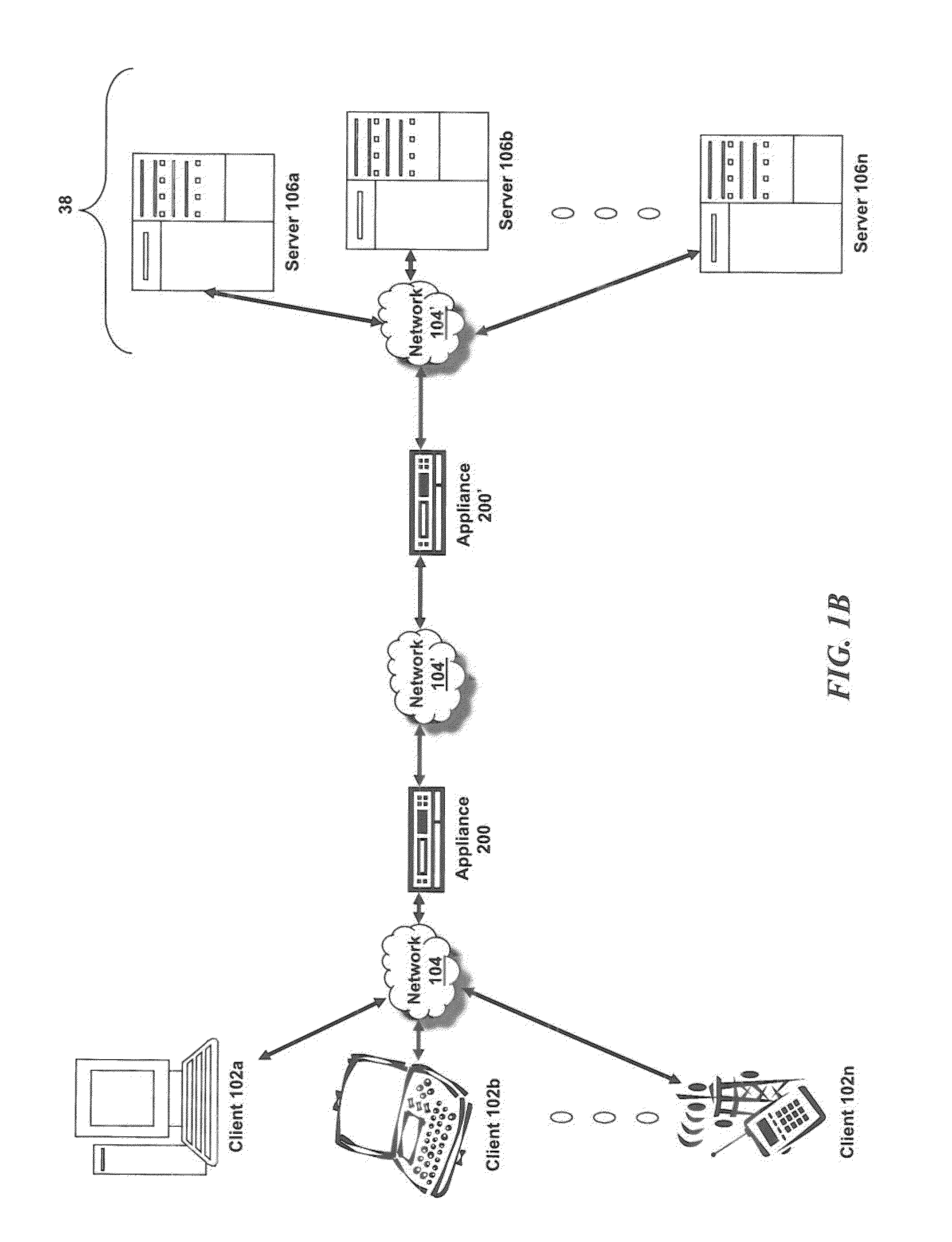Systems and methods for reducing denial of service attacks against dynamically generated next secure records
a dynamically generated, next secure record technology, applied in the field of data communication networks, can solve the problems of malicious attackers that cannot be trusted, malicious attackers can intercept these requests and/or responses, and response can't be trusted, so as to reduce the capability of malicious attackers
- Summary
- Abstract
- Description
- Claims
- Application Information
AI Technical Summary
Benefits of technology
Problems solved by technology
Method used
Image
Examples
Embodiment Construction
[0038]For purposes of reading the description of the various embodiments below, the following descriptions of the sections of the specification and their respective contents may be helpful:[0039]Section A describes a network environment and computing environment which may be useful for practicing embodiments described herein;[0040]Section B describes embodiments of systems and methods for delivering a computing environment to a remote user;[0041]Section C describes embodiments of systems and methods for accelerating communications between a client and a server;[0042]Section D describes embodiments of systems and methods for virtualizing an application delivery controller;[0043]Section E describes embodiments of systems and methods for providing a multi-core architecture and environment; and[0044]Section F describes embodiments of systems and methods for reducing denial of service (DoS) attacks against dynamically generated next secure (NSEC) domain name system (DNS) records.
A. Netwo...
PUM
 Login to View More
Login to View More Abstract
Description
Claims
Application Information
 Login to View More
Login to View More - R&D
- Intellectual Property
- Life Sciences
- Materials
- Tech Scout
- Unparalleled Data Quality
- Higher Quality Content
- 60% Fewer Hallucinations
Browse by: Latest US Patents, China's latest patents, Technical Efficacy Thesaurus, Application Domain, Technology Topic, Popular Technical Reports.
© 2025 PatSnap. All rights reserved.Legal|Privacy policy|Modern Slavery Act Transparency Statement|Sitemap|About US| Contact US: help@patsnap.com



